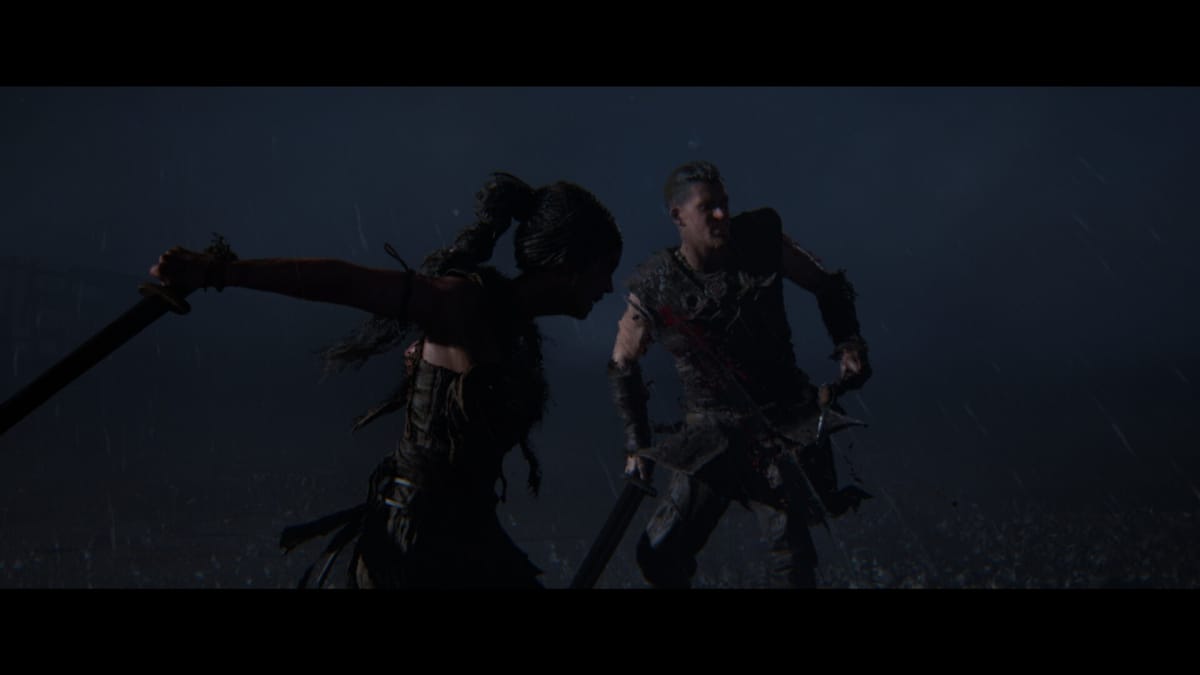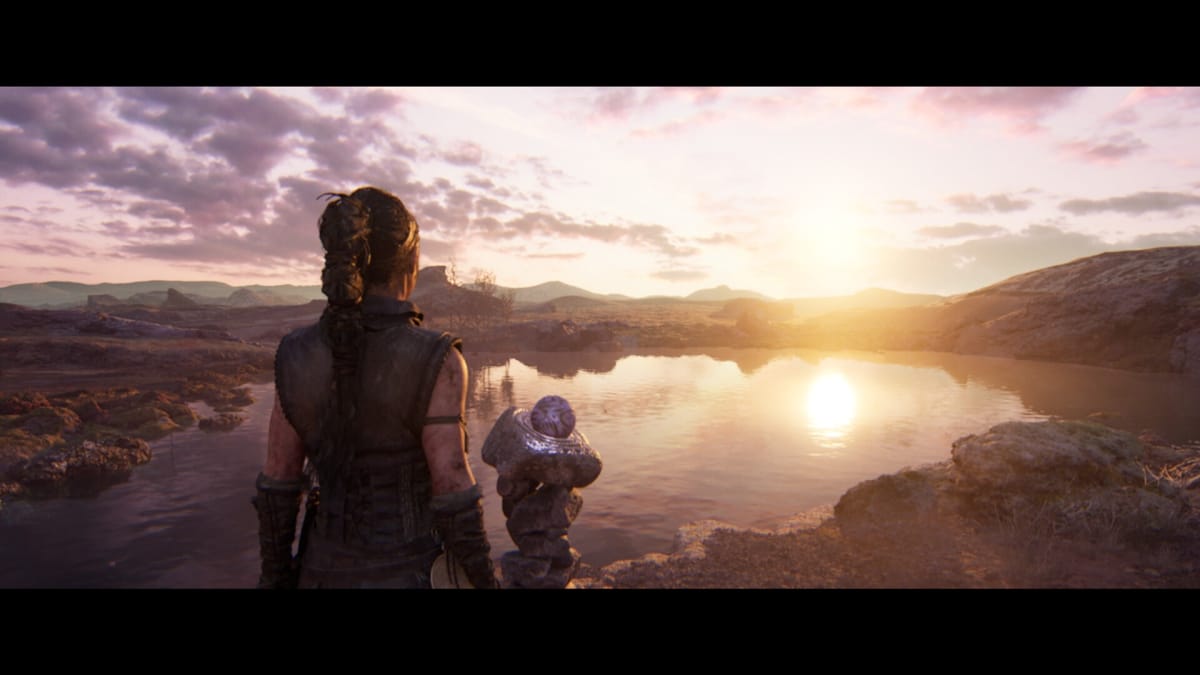From the first couple of minutes, Senua’s Saga: Hellblade II overwhelms the senses. Crashing waves, thunderous rain, whimpering pleas for mercy; Ninja Theory’s got it all. And that’s all on top of the voices in your head.
This sequel seven years in the making amps up the scale, going for epic proportions of action and stakes. Instead of the deeply personal journey focused solely on Senua, Ninja Theory introduces a small cast of characters with their own motivations.
At the end of the day though, this is Senua’s saga, and it’s wrapped in a highly polished production that’s as impressive as it is overwhelming, in a good way. Unfortunately, the narrative, while thought-provoking, ultimately doesn't quite stick the landing.

A Technical Achievement
When Oppenheimer hit theaters last summer, I distinctly remember two things about it: its serendipitous competition with Barbie, and the sheer power of experiencing a pseudo-nuclear explosion in an IMAX theater. It’s a visceral head-to-toe experience that easily stands out from the rest of the story, whether you liked it or hated it.
Senua’s Saga: Hellblade II reaches that same level of technical prowess, really flaunting its ability to overwhelm you with its powerful, raw, and primal soundscape.
The game recommends using headphones, much like the previous game, and you’d be doing yourself a disservice playing it on speakers. I primarily used the Razer BlackShark V2 Pro, and it created this sense of immediacy, intimacy, and immersion.

The Furies, the voices in Senua’s head, make a return, and they play roles both for gameplay and narrative. They’ll hint at how to solve puzzles or attack enemies, but also provide insight into narrative moments.
It’s never straightforward, though. Sometimes, they’ll say what just happened; other times, they’ll doubt someone’s intent. Or they’ll double back and doubt their own doubts. They’ll mock Senua for trusting a character or mock her for not listening to another. Sometimes, they’ll even cheer her on.
These Furies are a symptom of Senua’s psychosis. She perceives the world differently, hearing voices others don’t and seeing things others don’t see. That’s brought to life by the world literally shifting in front of your eyes, turning majestic scenes into menacing terrors.

The reality-bending warps feel even more intense with the audio design, and the sheer beauty of the graphics really delivers breathtaking scene after scene. Picturesque vistas stretch to the horizon, while all the cutscene camera work frames everything with the right amount of suspense and drama.
The facial animations stand out among the competition as well. In the prequel, it was just Senua’s face, especially her eyes, that impressed me. That lifelike fidelity has been upgraded and applied for most other major characters here, really selling the key emotional moments here.
Hellblade II really isn’t much of a video game. It’s a cinematic experience. It’s a feast for the senses, especially your ears.

Clashing Blades, Piercing Screams
Where the audio comes most to life is in combat. The gameplay takes a primarily over-the-shoulder view, like the recent God of War games.
What kept me most engaged was the sheer emotion behind every one of Senua’s battle cries. Vengeance, fury, desperation, exhaustion; it all comes through actress Melina Juergens’s performance.
Fights are one on one, and after taking care of one enemy, another appears, usually with some canned animations of them interacting with another character or grabbing Senua. It’s a neat effect that really adds to that cinematic feeling, though it does get predictable partway through.

You use light attacks, heavy attacks, dodges, and blocks to beat enemies. You can also build up and burn meter to attack faster. It’s pretty standard action game combat, and there are accessibility options to literally make the combat encounters play themselves.
Aiding the simple approach to gameplay is the elevated animations. It’s a lot like Uncharted 4’s melee combat, where the animations react to the context between Senua and her enemy. But these ones are brutal, definitely not for the faint of heart. I saw a few repeat, and they made me flinch every time.

A Nuanced Story That Falls a Little Flat
Between combat encounters, Hellblade II plays a lot like a walking simulator, much like its predecessor. There are some light puzzling and occasional collectibles off the beaten path, but for the most part, you’re holding forward on the stick and occasionally hitting A to climb or interact.
While that sounds boring, that’s also prime opportunity for the narrative to develop. These quieter moments are when the Furies sow seeds of hope and doubt in Senua’s mind. It’s when the supporting cast tells Senua about the ways of the world and the giants who terrorize it.
For a narrative as dense as this, these moments let them breathe. There are a lot of allegories here; Hellblade II has a lot to say about societal power structures, family ties, religion, mental health, and hero worship.

However, there were just enough times when I was really aware that all I was doing was holding forward on the stick. I know that’s the conceit of narrative-heavy games like this, but I did find myself getting bored on occasion.
These moments usually come from when Senua’s alone. As a leading character, she’s a woman of few words, which leads to lots of one-sided exchanges with the voices in her head. Even with other characters, she sometimes doesn’t answer their questions.
Hellblade II offers her more opportunities to play off other people, which is an intrinsic way for us to understand her. But because of her standoffish nature, it doesn’t quite feel like she connects with any of them, even when the narrative implies a deeper bond.
Despite playing as her, I rarely found myself understanding her motivations and emotions other than suffering. She gets hurt a lot, physically and emotionally, and that’s most of the impression I’m walking away with. It’s almost miserable at times.

Lots of pivotal story moments are explained as you walk a lit-up path while watching ghosts of the past act out history. A narrator will explain what’s going on, too. For a game that prioritizes cinematic storytelling, I can’t help but feel like these moments could have been more engaging than simply walking after ghosts.
I won’t spoil the ending of course, but it did leave me wanting more—and not in a good way. It feels abrupt and unresolved.
Completing the story unlocks an alternate mode where other characters will narrate, which is a neat way to add more context and encourage more playthroughs. However, even revisiting the last chapter with extra narration, I didn’t find myself feeling much better about the end.

Senua’s Saga: Hellblade II Review | Final Thoughts
On technical achievement alone, Senua’s Saga: Hellblade II stands out as one of the better titles under Xbox’s banner. Environments are awe-inspiring, faces are jaw dropping, and combat is intensely visceral.
There are a lot of thematic ideas to dissect in the story, and I found the last two chapters especially interesting in what they have to say. Unfortunately, the overall journey is punctuated with slower, almost boring moments, and its ending leaves a bit to be desired.
Ultimately, Senua’s saga is one I’d want to follow if we get more, but it’ll definitely be more for the technical presentation over Senua herself.
Senua’s Saga: Hellblade II was reviewed on PC via Steam with a code provided by the publisher over roughly 7 hours of gameplay. All screenshots in this review were taken by the reviewer during gameplay.
Review Summary
Pros
- Intense, beautiful presentation
- Audio is overwhelmingly immersive
- Combat is simple yet viscerally satisfying
- Narrative explores many interesting themes
Cons
- Weak conclusion to the story
- Moments that feel a little boring
Have a tip, or want to point out something we missed? Leave a Comment or e-mail us at tips@techraptor.net












